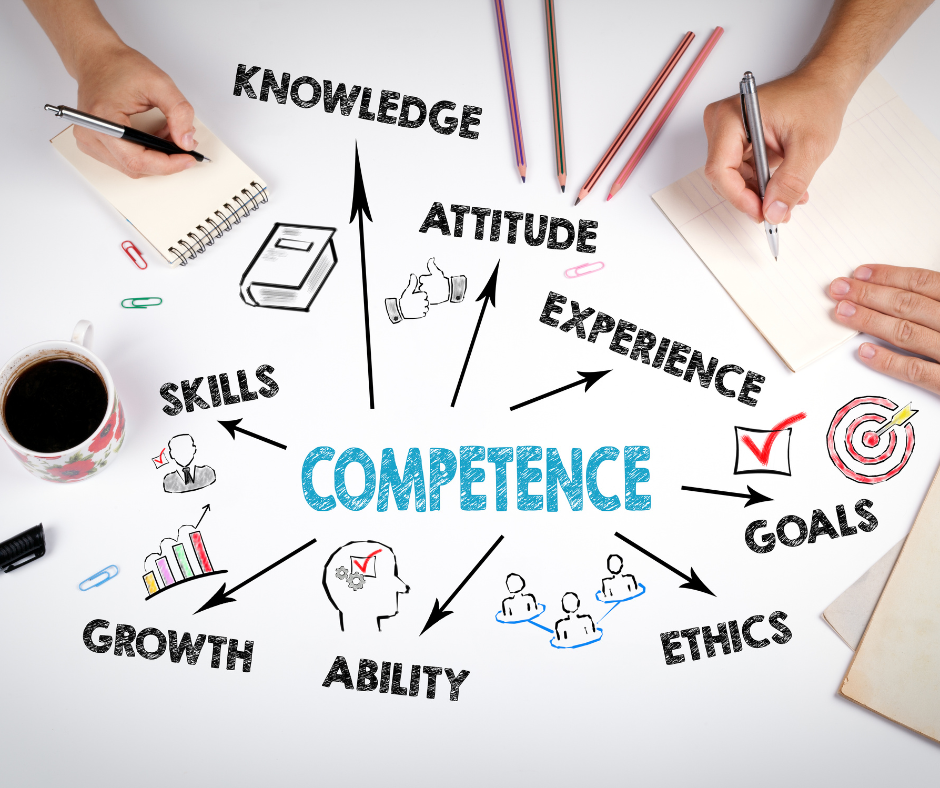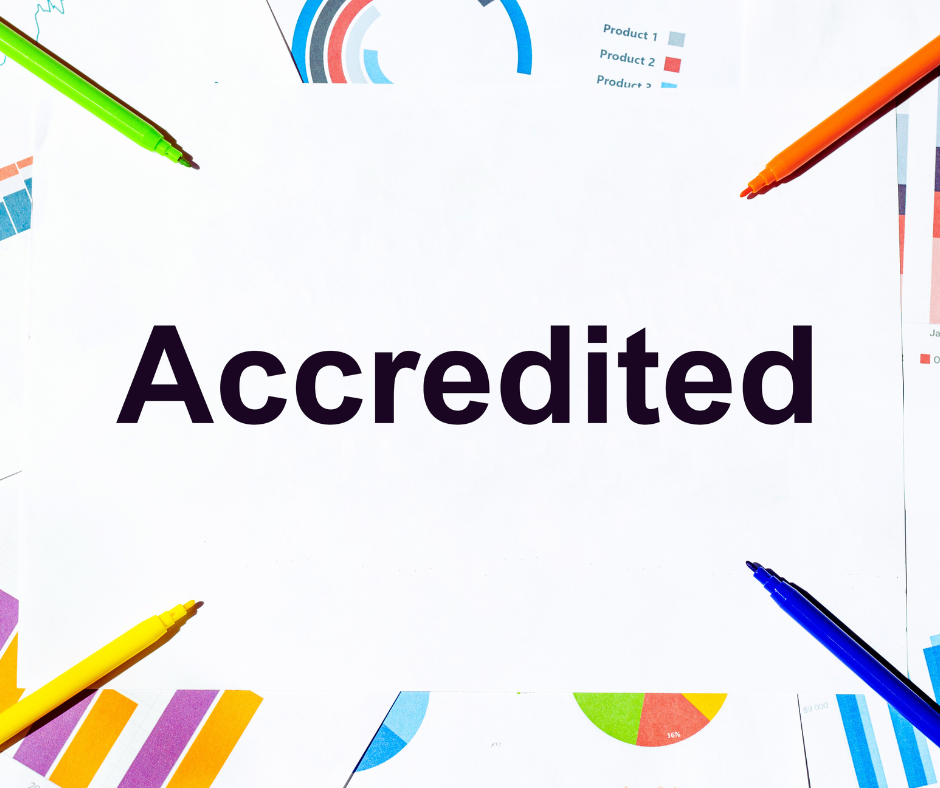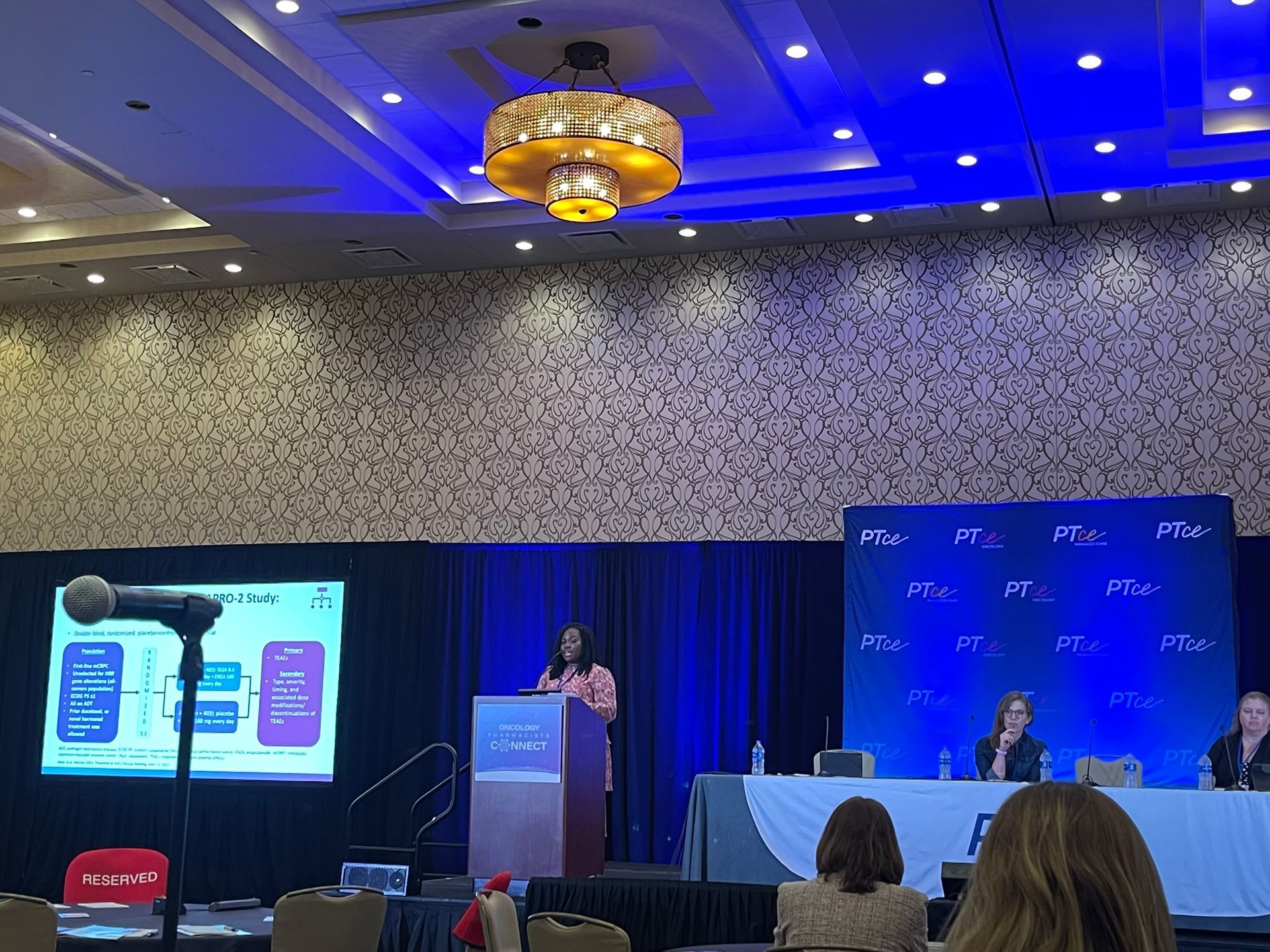Developing Competency-Based Cpe Programs For Pharmacists
Developing Competency-Based CPE Programs For Pharmacists

Competency-based education (CBE) is increasingly being recognized as a transformative approach in the realm of pharmacy education, particularly in the context of continuing professional education (CPE) for pharmacists. The traditional model of education, which often emphasizes time-based learning and the accumulation of credit hours, is gradually giving way to a more flexible and personalized framework that prioritizes the acquisition and demonstration of specific competencies.
This shift is reflective of the broader trends in healthcare, where the demand for accountability, improved patient outcomes, and adaptability in practice is paramount.
CBE offers an opportunity to tailor learning experiences to the unique needs of the individual pharmacist. By focusing on competency rather than merely time spent on educational activities, pharmacists can develop the exact skills and knowledge that are relevant to their practice and professional growth. This relevance is particularly crucial given the rapid advancements in pharmaceutical sciences, burgeoning therapeutic options, and evolving healthcare models that require pharmacists to continually adapt and advance their clinical expertise.
CBE is also aligned with lifelong learning principles, promoting a dynamic and responsive education model that evolves with the needs of both pharmacists and the healthcare system at large. Through various methods such as self-directed learning, performance assessments, and real-world applications, pharmacists are empowered to engage in meaningful learning experiences that directly enhance their practice. This approach ensures that pharmacists are not only meeting regulatory requirements but are also well-equipped to contribute effectively to patient care and health system improvements.
As this model gains traction, it represents a promising pathway for developing a more capable and agile pharmacy workforce, poised to meet the challenges of modern healthcare.
Identifying Core Competencies For Pharmacists
Identifying core competencies for pharmacists is a critical step in developing effective competency-based continuing professional education (CPE) programs. The evolving landscape of healthcare, driven by advancements in technology, pharmaceutical sciences, and patient care models, necessitates a re-evaluation of the skills and abilities that pharmacists must possess to deliver optimal healthcare outcomes. Core competencies form the foundational pillars upon which specialized knowledge and skills are built, enabling pharmacists to fulfill their diverse roles effectively.
One fundamental competency is clinical knowledge and application. Pharmacists must have a deep understanding of pharmacology, therapeutics, and evidence-based medicine to make informed decisions that enhance patient care. This includes the ability to interpret clinical data, assess patient needs, and make recommendations for medication management that optimize therapeutic outcomes while minimizing risks.
Communication skills are equally essential, as pharmacists increasingly serve as integral members of multidisciplinary healthcare teams. Effective communication involves not only the ability to educate patients and other healthcare professionals about medication use and safety but also the ability to engage in collaborative problem-solving with peers from various clinical backgrounds.
Furthermore, as the profession continues to shift towards patient-centered care, competencies in patient counseling and education have gained importance. Pharmacists must be adept at conducting patient interviews, understanding and respecting cultural and individual differences, and tailoring health information to meet diverse patient needs.
Pharmacists must also possess competencies in critical thinking and problem-solving, as these skills are imperative for navigating the complexities of modern healthcare systems. This includes adapting to new technologies, such as electronic health records and telepharmacy services, and applying innovative solutions to improve patient outcomes.
Finally, a commitment to lifelong learning is embedded within the pharmacist's core competencies, ensuring they remain current with emerging evidence and practices, ultimately contributing to the continuous improvement of care and service delivery in the healthcare environment.
Designing Competency-Based CPE Curricula
Designing competency-based continuing pharmacy education (CPE) curricula involves a strategic approach that aligns educational content with the essential competencies that pharmacists must demonstrate in their practice. The primary goal is to ensure that pharmacists are equipped with the skills and knowledge necessary to provide high-quality patient care in an ever-evolving healthcare environment. This process begins by conducting a thorough needs assessment to identify the current gaps in knowledge and skills among pharmacists, considering factors such as emerging medications, new technologies, and evolving patient care standards.
Once these competency gaps are identified, the curriculum should be designed to address them through targeted learning objectives. These objectives should be specific, measurable, achievable, relevant, and time-bound (SMART) to guide the educational interventions effectively. The development of the curriculum should involve input from a diverse group of stakeholders, including practicing pharmacists, academia, and regulators, to ensure it is comprehensive and relevant.
Educational content should be organized into modules that reflect real-world practice scenarios, allowing pharmacists to apply their learning in practical settings. This can include case studies, interactive simulations, and problem-solving exercises that mimic the challenges pharmacists face in their daily roles. Assessment methods should be built into the curriculum to evaluate not only knowledge acquisition but also the application of skills in practice.
Formative assessments, such as quizzes and peer feedback, along with summative assessments like practical exams or portfolio reviews, help in gauging competencies.
Continuous feedback loops from participants and stakeholders are crucial for iterative improvements of the curriculum. By incorporating technologies such as online learning platforms and interactive digital resources, the curriculum can provide flexible, accessible learning opportunities that cater to various learning styles. Ultimately, the success of a competency-based CPE curriculum lies in its ability to evolve with the profession and its commitment to fostering lifelong learning among pharmacists.
Assessment Strategies For Measuring Competency
In developing competency-based continuing pharmacy education (CPE) programs, assessment strategies are crucial to ensure that pharmacists achieve the required competencies. Such strategies must go beyond traditional knowledge-based evaluations and incorporate diverse methods to comprehensively assess skills, attitudes, and behaviors that reflect real-world practice. One of the primary methods involves direct observation and performance-based assessments in simulated or actual practice environments. This allows educators to evaluate how pharmacists apply their knowledge and skills in practice, facilitating immediate feedback and identification of areas for improvement.
Another important strategy is the use of objective structured clinical examinations (OSCEs), which can effectively measure clinical competence by presenting pharmacists with realistic scenarios to manage. These examinations assess a range of competencies, from patient communication and clinical reasoning to technical skills, providing a well-rounded picture of a pharmacist’s abilities. Incorporating reflective practice through portfolios or learning diaries can also serve as an assessment strategy.
This approach encourages pharmacists to critically reflect on their experiences and learning, promoting continuous self-assessment and lifelong learning. Portfolios allow for the documentation of achievements, challenges, and progress over time, offering a longitudinal view of competency development.
Standardized patients are another innovative tool, providing an opportunity to assess competencies in communication, patient counseling, and interpersonal skills. Feedback from these encounters can be invaluable for improving pharmacist-patient interactions. Additionally, peer assessments and interprofessional feedback can offer diverse perspectives on a pharmacist’s performance, promoting collaboration and a deeper understanding of competency in team-based care settings. The integration of technology, such as e-learning modules and virtual simulations, also expands the possibilities for assessment by allowing pharmacists to demonstrate competencies in a controlled, measurable environment.
Together, these strategies provide a comprehensive framework for assessing and enhancing the competency of pharmacists, ensuring they can meet the evolving demands of healthcare practice.
Implementing Competency-Based Programs
Implementing competency-based Continuing Pharmacy Education (CPE) programs requires a strategic approach that aligns with the needs of pharmacists while satisfying regulatory standards. The first step in implementation is conducting a thorough needs assessment to identify the competencies pharmacists must acquire or enhance. This process involves consulting with industry stakeholders, including practicing pharmacists, academic professionals, and regulatory bodies, to determine the most relevant skills and knowledge areas.
Once competencies are identified, educational planners must design a curriculum that supports experiential learning and skills application. This requires integration of diverse educational methodologies such as workshops, simulations, and case studies that align with real-world pharmacy practice scenarios.
In transitioning to a competency-based approach, it is essential to secure buy-in from both educators and participants. This can be achieved through clear communication of the benefits, such as more personalized learning paths, and enhanced professional development that is closely aligned with career goals. Faculty development programs should be instituted to ensure educators are well-equipped to deliver and evaluate competency-based education effectively.
Additionally, robust assessment tools must be established to evaluate both knowledge and skill acquisition, ensuring assessments are both formative and summative.
Utilizing technology platforms can greatly enhance the delivery and tracking of competency-based programs. Learning management systems should be adopted to offer flexibility and accessibility to pharmacists, allowing them to engage with the material at their own pace. Incorporating data analytics can help personalize learning experiences by identifying areas where participants may require additional resources or support. Finally, continuous evaluation and feedback mechanisms are critical to ensure the program remains adaptive and responsive to the ever-evolving landscape of pharmacy practice, thus ensuring that pharmacists remain competent and capable of delivering the highest quality of care.
Evaluating The Effectiveness Of CPE Programs
Evaluating the effectiveness of competency-based continuing pharmacy education (CPE) programs is crucial to ensure that pharmacists achieve the desired competencies and enhance their professional practice. To assess these programs, it is essential to establish clear, measurable outcomes aligned with the expected competencies. These outcomes serve as benchmarks for determining whether the educational activities have effectively addressed the learning needs of participants.
One approach to evaluation involves using both formative and summative assessment methods. Formative assessments occur throughout the program and provide ongoing feedback, allowing facilitators to adjust content or delivery methods in real time to enhance learning. Techniques such as quizzes, interactive discussions, and self-reflection exercises enable participants to monitor their progress and identify areas needing improvement.
Summative evaluations, conducted at the program's conclusion, assess the overall impact on participants' knowledge, skills, and attitudes. Tools like pre-and post-assessment tests, practical simulations, or case studies help measure changes in competence. Additionally, collecting feedback from participants through surveys or interviews can provide valuable insights into the program's strengths and areas for enhancement.
It is also important to evaluate long-term changes in practice to understand the program's effectiveness beyond immediate learning gains. Follow-up surveys or interviews can ascertain whether pharmacists have successfully integrated new competencies into their daily practice, improving patient care and outcomes.
Finally, including stakeholders such as employers or professional organizations in the evaluation process can offer a broader perspective on the program's relevance and impact within the pharmacy sector. By using a comprehensive, multi-faceted evaluation approach, educators can ensure that competency-based CPE programs effectively meet the evolving needs of pharmacists and contribute to the advancement of the profession.
Future Trends And Challenges In Competency-Based Pharmacy Education
As competency-based education gains traction in pharmacy, various future trends and challenges emerge that will shape its evolution. One notable trend is the increasing use of technology to personalize learning experiences. Advanced data analytics, artificial intelligence, and adaptive learning platforms are playing crucial roles in tailoring educational programs to meet individual pharmacists' competencies. This personalized approach ensures that learners focus on areas where improvement is needed, ultimately fostering a more efficient learning process.
Additionally, there is a growing emphasis on interprofessional education, with competency-based programs highlighting collaboration among healthcare disciplines. Such programs encourage pharmacists to work alongside doctors, nurses, and other healthcare professionals, enhancing their ability to function effectively within healthcare teams.
However, this shift entails several challenges. One significant hurdle is the creation and standardization of competency assessments, ensuring they accurately reflect pharmacists' abilities and align with real-world demands. Developing valid, reliable, and fair assessment methods requires collaboration among educational institutions, accrediting bodies, and industry stakeholders. Another challenge is ensuring equitable access to these advanced educational tools. With technology being a cornerstone of competency-based education, disparities in access may widen, potentially hindering some pharmacists' professional development.
Moreover, educators must balance the need to quickly adapt to evolving healthcare landscapes with the assurance of consistent educational quality. As pharmacy practice evolves with advances in medicine and technology, competency-based education must remain dynamic, updating competencies to reflect the latest industry standards. Addressing these challenges will require ongoing dialogue among educators, policymakers, and practitioners to ensure that competency-based pharmacy education continues to prepare pharmacists not just for current practice, but for future healthcare needs as well.
Through these efforts, pharmacists will be better equipped to provide high-quality care in an ever-changing healthcare environment.
Elevate your CPE programs with a focus on measurable competencies and skill development. Empower pharmacists to succeed in real-world scenarios with tailored education solutions.
📩
Contact us today to explore how competency-based CPE can transform your offerings!
🔗 Visit
Community RSG to get started.

Slide title
Write your caption hereButtonSlide title
Write your caption hereButtonSlide title
Write your caption hereButton
Blogs
Community Resource Solutions Group
Transforming Health Equity Initiatives with Proven Strategies and Insights.
Business Hours
Mon-Fri 9 am-5 pm
Houston, TX
TeL: 346-436-7986
MENU
STAY CONNECTED
Contact Us
We will get back to you as soon as possible.
Please try again later.












